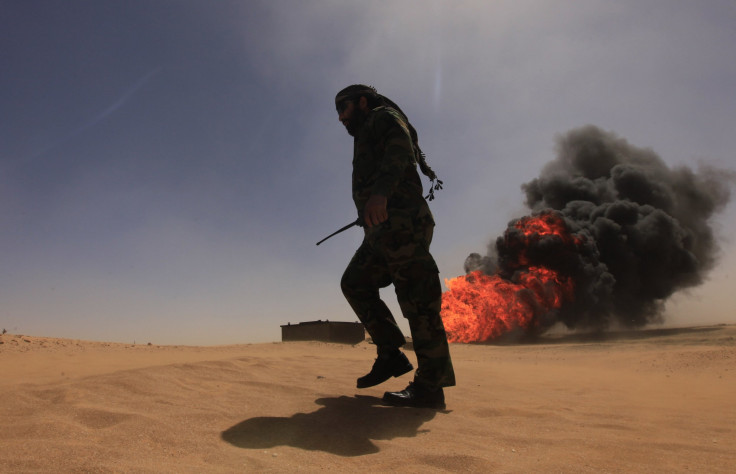The Second Crisis: Post-Revolution Libya Faltering As Oil Woes Imperil Economy

The sudden shutdown of two major oil pipeline terminals along the Mediterranean Sea has brought the North African country of Libya to a new breaking point, two years after the bloody Arab Spring revolution overthrew Moammar Gadhafi.
Libya has a brand new transitional government and plenty of oil to fuel growth and recovery for its 6.5 million people. But those hydrocarbons have to leave the country if Libya is to profit from its most abundant resource. And, the current shutdown, which may turn out to be the worst since 2011, threatens to stifle long-term growth for the country's economy.
Libya's two main sea terminals, Ras Lanuf and Es Sider, which have a combined output capacity of about 600,000 barrels per day, or bpd, had shut down for two weeks before re-opening on Sunday. And, the flow resumed only briefly before stopping yet again on Monday as security workers at the facility went on strike.
These shutdowns, combined with smaller disturbances across the country, have ensured that the country's current output --- between 300,000 and 600,000 bpd, according to most analysts' estimates -- is a far cry from the 1.5 million bpd that government officials touted shortly after the revolution.
According to projections from the International Monetary Fund, Libya's economy will grow by 17 percent this year -- faster than any other country on the African continent -- and then slow down to more sustainable rates, averaging around 7 percent annually through 2017.
That encouraging news is undermined by high volatility and a lack of diversification. About 95 percent of state revenues come from oil exports, and given the ongoing unrest in that sector, any growth projections rest on shaky ground. The government is keen to promote foreign investment in sectors other than hydrocarbons, but attracting international partners is a major challenge.
"Business visas are still expensive, bureaucracy is still opaque and time-consuming, the banking system is still weak and the legal framework remains unpredictable," Alex Warren of Frontier, an advisory group, told Reuters.
Complicating matters is a federal government in flux. Libya is currently headed by the General National Congress, which will serve as an interim legislature until a new constitution is drafted, at which point a permanent legislature can be elected. The process has been marred by difficulties, not least of which is the existence of various militant groups that banded together in 2011 to overthrow Gadhafi.
Today, many of those groups are responsible for enforcing security in their own communities. The government is stuck in the middle -- it seeks to reign in these militias but also depends on them to enforce order where it cannot. Competition between clans has only complicated oil labor disputes, with various groups fighting for lucrative jobs in security and maintenance.
Libya's oil, most of which is exported as crude, is light and sweet -- an attractive combination for international importers. The country had 47 billion barrels of proven reserves as of last year, and oil firms around the world are keeping a close eye on political developments in the country.
But the recent turmoil has had a ripple effect. Libyan authorities are past due on delivering loading schedules for September, and oil companies like Royal Dutch Shell (NYSE:RDS.A) and BP (NYSE:BP) -- which maintain exploration and production blocs from the Gadhafi era but have stalled on most operations since 2011 -- are biding their time.
“Shell wants a stable security environment – and they aren’t the only ones worried about strikes, opportunistic gun attacks and spotty security," one foreign oil consultant who was familiar with Libyan security operations told Voice of America. “The Libyan government is still a long way from consolidating control of the country’s oilfields, pipelines and ports.”
After the renewed strike on Monday, global markets are also feeling the pinch. On Tuesday, benchmark futures for Brent crude oil inched up toward $110 a barrel. Some analysts predict that Es Sider could open by the end of this week, possibly spurring similar developments at Ras Lanuf shortly thereafter.
But, given the constant on-again, off-again flow at these and other terminals along Libya's northern coastline, most analysts and foreign firms will take any good news with a grain of salt.
© Copyright IBTimes 2024. All rights reserved.











